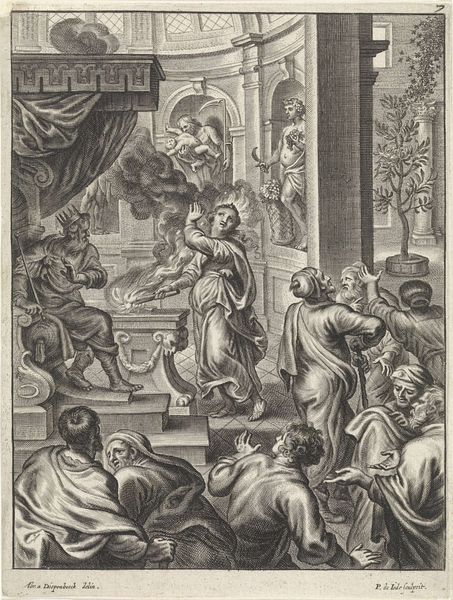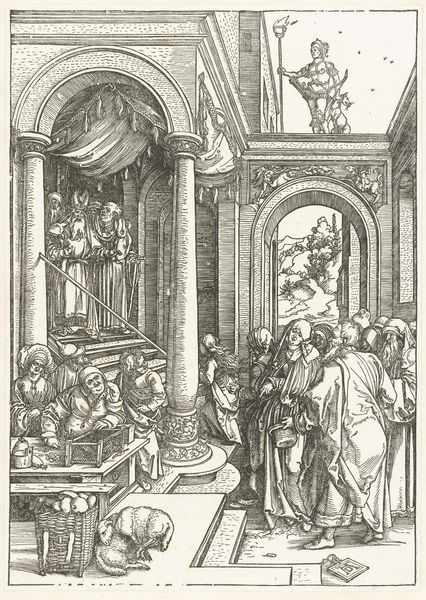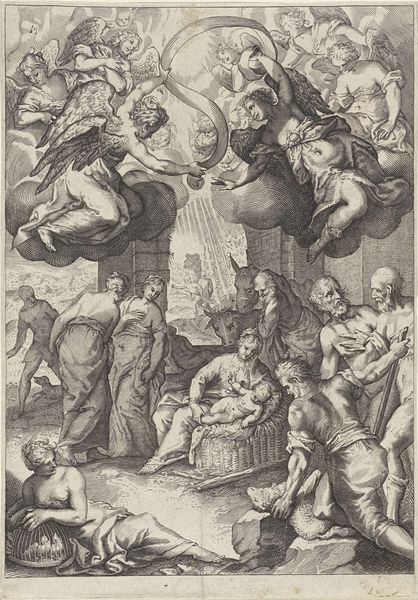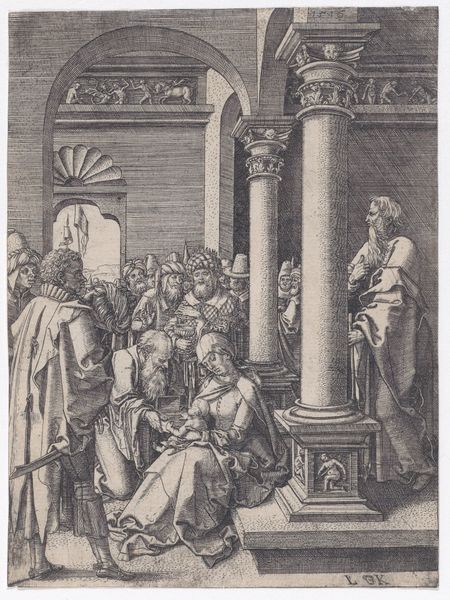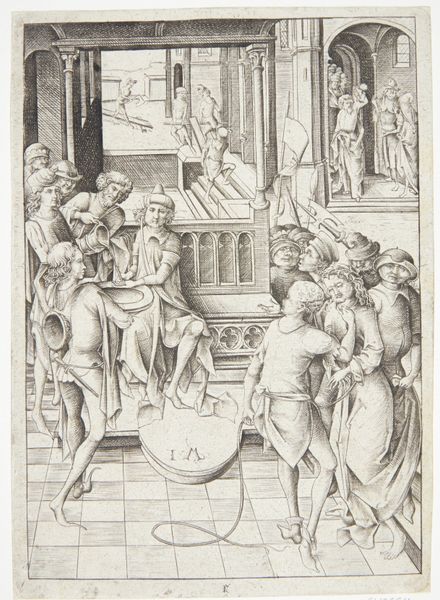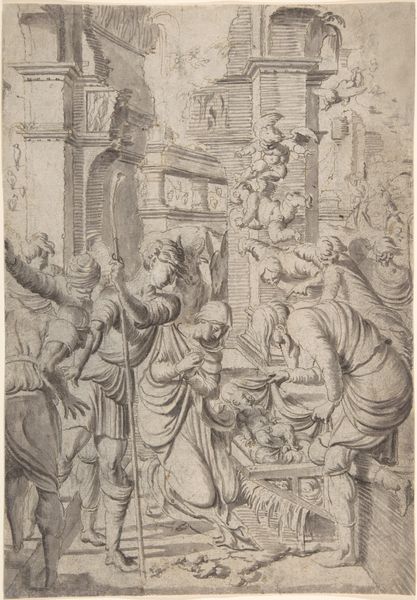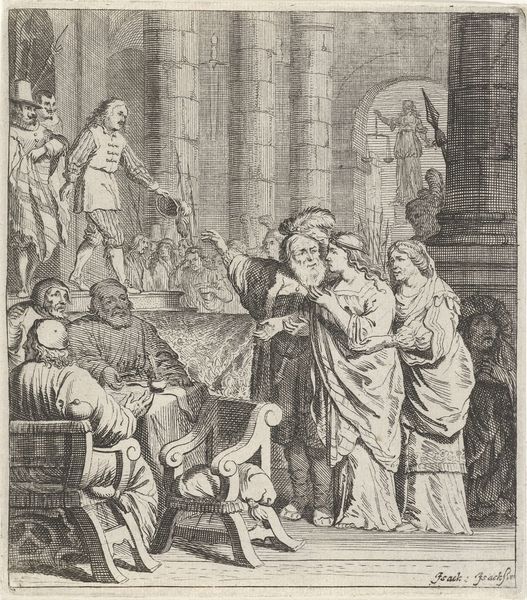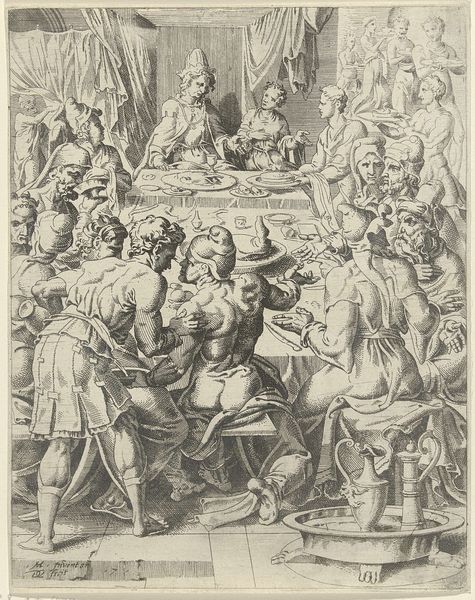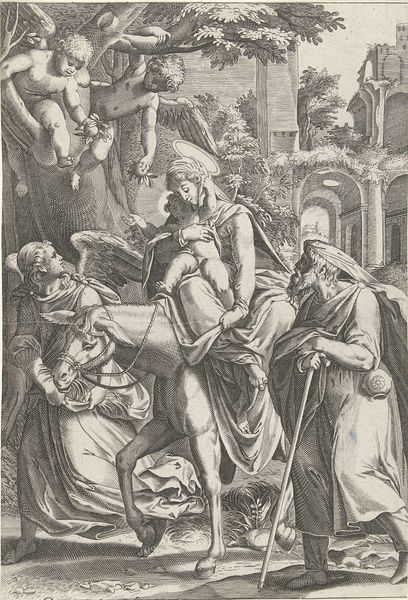
drawing, print, ink, engraving
#
drawing
#
pen drawing
# print
#
figuration
#
11_renaissance
#
ink
#
line
#
history-painting
#
northern-renaissance
#
engraving
Dimensions: width 198 mm, height 248 mm
Copyright: Rijks Museum: Open Domain
Curator: This print, rendered in ink, is titled "Christus voor Pilatus" dating back to 1548, by Dirck Volckertsz Coornhert. It’s currently held here at the Rijksmuseum. My first impression is that the density of figures creates an incredibly tense atmosphere. Editor: I agree. The artist uses incredibly fine lines to define each figure and detail, and the sheer number of them really builds a dramatic scene, one charged with symbolic importance within its historical context. Curator: Absolutely. Consider the historical period. This work comes out of the Northern Renaissance. The detailed line work and figuration speak to that. Editor: And look at the interplay of light and shadow created by the lines. Coornhert manipulates the viewer's eye with a clever control over where the highlights fall, creating focus in such a busy scene. Curator: That dramatic focus is essential. Remember, this scene is from the New Testament. The moment where Pilate presents Christ to the people before his crucifixion had strong political and religious connotations at the time, especially during the Reformation. Prints like this could disseminate ideas widely. Editor: Right. Beyond the narrative, though, observe how Coornhert uses linear perspective. While not perfectly accurate, the attempt to create depth, leading the eye towards the architecture and figures in the background, creates a believable space despite the highly stylized figures. Curator: I think what strikes me most is the engagement with civic themes. Pilate’s role embodies complex legal and political issues, resonating in a period grappling with questions of justice and authority. The people present exert the true decision on Christ fate. Editor: And, stepping back, there's a strong emotional resonance achieved with the figures densely placed with carefully considered placement and form that really contributes to the piece's overall effectiveness. The artist guides us to what really matters. Curator: In viewing "Christus voor Pilatus," we witness how art in the Renaissance engaged actively with society, reflecting on and influencing beliefs and civic values of its time. Editor: It also highlights how a skillful manipulation of artistic techniques creates an image that carries weight with its symbolic meaning and elicits profound impact.
Comments
No comments
Be the first to comment and join the conversation on the ultimate creative platform.
